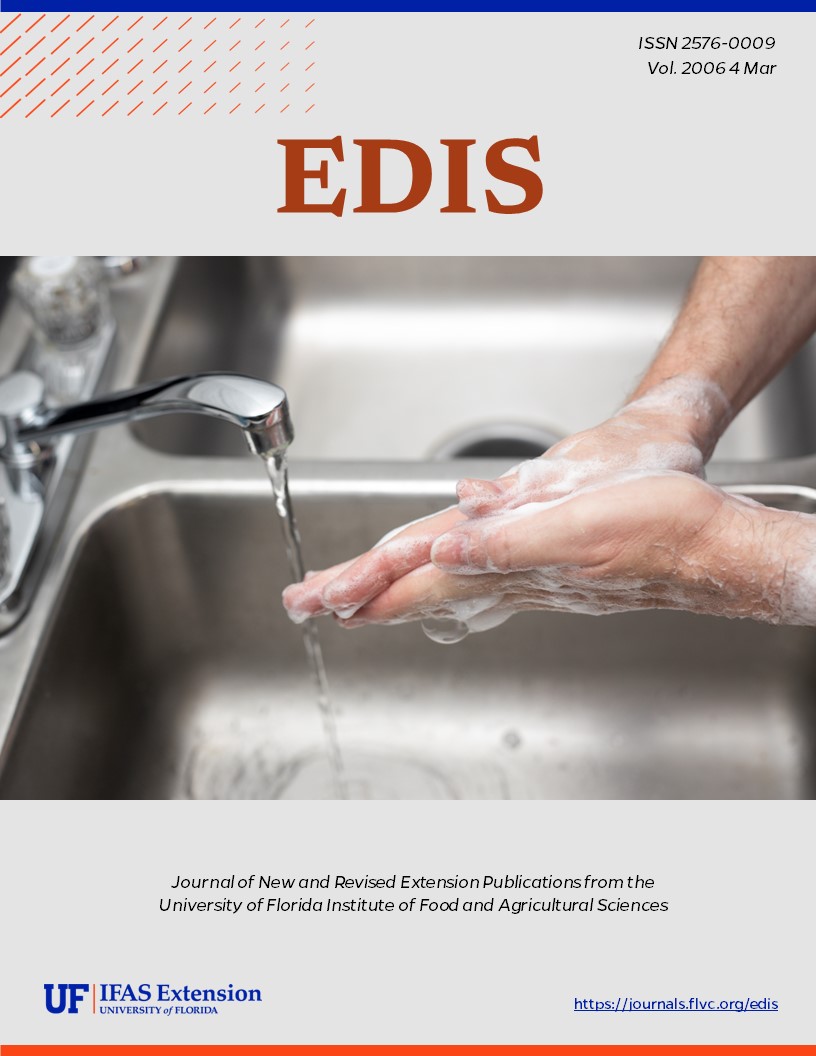Abstract
Land and water managers who apply herbicides to control invasive plant species and other nuisance vegetation strive to minimize environmental impacts as a matter of policy and daily operations. It is, therefore, not surprising that concern has been expressed and many questions asked relative to recent publications by Relyea (2005a, 2005b, 2005c), which implicate use of glyphosate-containing herbicides in global decline of amphibians. The purpose of this article is to put these recent publications in perspective relative to aquatic and terrestrial natural area weed management and explain why land managers should continue to use glyphosate-containing products to protect managed habitats from weeds without concern for unreasonable adverse environmental impacts. This document is SS-AGR-104, one of a series of the Agronomy Department, Center for Aquatic and Invasive Plants, UF/IFAS Extension. Original publication date February 2006.
References
Edgington, A. N., P.M. Sheridan, G. R. Stephenson, D. G. Thompson and H. J. Boermans. 2004. Comparative effects of pH and Vision® Herbicide on two life stages of four anuran amphibian species. Environ. Toxicol. Chem. 23:815-822. https://doi.org/10.1897/03-115
Haller, W. T. and R. K. Stocker. 2003. Toxicity of 19 adjuvants to juvenile Lepomis macrochirus (bluegill sunfish). Environ. Toxicol. Chem. 22:615-619. https://doi.org/10.1002/etc.5620220321
Howe, C. M., M. Berrill, B. D. Pauli, C. C. Helbing, K. Werry and N. Veldhoen. 2004. Toxicity of glyphosate-based pesticides to four North American frog species. Environ. Toxicol. Chem. 23:1928-1938. https://doi.org/10.1897/03-71
Mann, R. M. and J. R. Bidwell. 1999. The toxicity of glyphosate formulations to four species of southwestern Australian frogs. Arch. Environ. Contam. Toxicol. 36:193-199. https://doi.org/10.1007/s002449900460
Perkins, P. J., H. J. Boemans, G. T. Stephenson. 2000. Toxicity of glyphosate and triclopyr using the frog embryo teratogenesis assay - Xenopus. Environ. Toxicol. Chem. 19:940-945. https://doi.org/10.1002/etc.5620190422
Relyea, R. A. 2005a. The lethal impacts of Roundup and predatory stress on six species of North American tadpoles. Arch. Environ. Contam. Toxicol. 48:351-357. https://doi.org/10.1007/s00244-004-0086-0
Relyea, R. A. 2005b. The lethal impact of Roundup on aquatic and terrestrial amphibians. Ecological Applications 15:1118-1124. https://doi.org/10.1890/04-1291
Relyea, R. A. 2005c. The impact of insecticides, and herbicides on the biodiversity and productivity of aquatic communities. Ecological Applications 15:618-627. https://doi.org/10.1890/03-5342
Thompson, D. G., B. F. Wojtaszek, B. Staznik, D. T. Chartrand, and G. R. Stephenson, 2004. Chemical and biomonitoring to assess potential acute effects of Vision® Herbicide on native amphibian larvae in forest wetlands. Environ. Toxicol. Chem. 23:843-849. https://doi.org/10.1897/02-280
Vencill, W. K. ed. 2002. Herbicide Handbook. Weed Science Society of America, Lawrence, KS. 493 pp.
Wojtaszek, B. F., B. Staznik, D. T. Chartrand, G. R. Stephenson, and D. G. Thompson. 2004. Environ. Toxicol. Chem. 23:832-842. https://doi.org/10.1897/02-281

